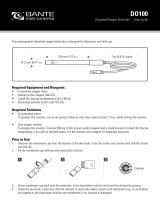
Table 2 Approximate barometric pressure at various elevations
Elevation
(feet)
Pressure
(mm Hg)
Elevation
(feet)
Pressure
(mm Hg)
Elevation
(feet)
Pressure
(mm Hg)
0 760 2000 708 4000 659
250 753 2250 702 4250 653
500 746 2500 695 4500 647
750 739 2750 689 4750 641
1000 733 3000 683 5000 635
1250 727 3250 677 5250 629
1500 720 3500 671 5500 624
1750 714 3750 665 5750 618
Specifications
Type Clark-type polarographic electrode
Range 0 to 15 mg/L (or ppm)
Accuracy ±0.2 mg/L with calibration
Response time 95% of final reading in 30 s, 98% in 45 s
Temperature compensation Automatic from 5 to 35°C
Pressure compensation Manual, accounted for during calibration
Salinity compensation Manual, accounted for during calibration
Shaft diameter 12 mm OD
Minimum sample flow 20 cm/second
Factory calibration values slope: 3.27
intercept: –0.327
Care and Maintenance
Long-term storage (more than 24 hours) Remove the membrane cap and rinse
the inside and outside of the cap with distilled water. Shake the membrane cap
dry. Also rinse and dry the exposed anode and cathode inner elements (blot
dry with a lab wipe). Reinstall the membrane cap loosely onto the electrode
body for storage. Do not screw it on tightly.
Short-term storage (less than 24 hours) Leave the probe assembled with the
filling solution inside and place in distilled water. Note: Do not completely
submerge; the handle is not waterproof.
Replacing the membrane cap The membrane cap will require replacement
from time to time; once per year if used infrequently, or after about 6 months
of continuous use. Replacement of the membrane cap is recommended when
your Dissolved Oxygen Probe will no longer respond rapidly during
calibration or when taking readings.
Polishing the metal electrodes If the cathode (the small platinum contact at
the tip of the inner stem) and anode (the silver metal surrounding the inner
7
stem) become discolored or appear corroded, polish them with the polishing
s
trips provided. Perform this operation only as needed to restore electrode
performance—it should be necessary only once every year or so. Remove the
membrane cap and thoroughly rinse the inner elements of the probe with
distilled water to remove all filling solution. Cut a one-inch piece from the
DO Electrode Polishing Strip provided. Wet the dull (abrasive) side of the
polishing strip with distilled water. Using a circular motion, polish the
cathode. Use gentle finger pressure during this polishing operation. Polish only
enough to restore a bright, clean surface. Next, polish the anode. Polish only
enough to restore a silver appearance. Note: Aggressive polishing will damage
the probe inner elements. Be sure to use only gentle pressure when performing
the polishing of the anode and cathode. When you have completed the
polishing, rinse the cathode and anode elements thoroughly and dry with a lab
wipe.
Sodium Sulfite Calibration Solution The 2.0 M sodium sulfite (Na
2
SO
3
)
calibration solution can be purchased (order code DO-CAL). But it can also be
prepared from solid sodium sulfite crystals: Add 25.0 g of solid anhydrous
sodium sulfite crystals (Na
2
SO
3
) to enough distilled water to yield a final
volume of 100 mL of solution. The sodium sulfite crystals do not need to be
reagent grade; laboratory grade will work fine. Prepare the solution 24 hours in
advance of doing the calibration to ensure that all oxygen has been depleted. If
solid sodium sulfite is not available, you may substitute either 2.0 M sodium
hydrogen sulfite solution, (sodium bisulfite, 20.8 g of NaHSO
3
per 100 mL of
solution) or 2.0 M potassium nitrite (17.0 g of KNO
2
per 100 mL of solution).
DO Electrode Filling Solution The DO Electrode Filling Solution is primarily
a potassium chloride solution. However, it also contains some proprietary
ingredients, and must therefore be purchased from Vernier (order code FS).
How the Sensor Works
The Vernier Dissolved Oxygen Probe is a Clark-type polarographic electrode that
senses the oxygen concentration in water and aqueous solutions. A platinum
cathode and a silver/silver chloride reference anode in KCl electrolyte are
separated from the sample by a gas-permeable plastic membrane.
A fixed voltage is applied to the platinum electrode. As oxygen diffuses through
the membrane to the cathode, it is reduced
1/2 O
2
+H
2
O+2e
–
→2OH
–
The oxidation taking place at the reference electrode (anode) is
Ag + Cl
–
→AgCl+e
–
8








